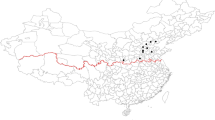Abstract
Musgrave was acutely aware that many private activities, both consumption and production, generate negative externalities. Advocates for an active government rely on this concept to justify public sector regulation of private activities. Regulations and mandates, along with penalties for non-compliance, are the primary instruments used by government to bring about the “correct” level of output whenever private output gives rise to negative externalities such as environmental pollution. This study in effect offers a case study of the Clean Air Act on employment, i.e., it empirically investigates whether pollution abatement costs have had a negative impact on manufacturing employment in the U.S. Conventional microeconomic theory suggests that there is a trade-off between environmental protection outlays and manufacturing activity, i.e., higher pollution abatement compliance costs borne by industries may contribute to plant shutdowns, lower production levels and lay-offs, and/or lack of investment, thereby leading to diminished manufacturing employment. Existing studies fail to offer a clear conclusion as to the impact of existing environmental protection measures on manufacturing activity. Using state-level data for 2001, this study finds that government-imposed pollution abatement costs have had a statistically significant negative impact on manufacturing employment in the U.S.
Similar content being viewed by others
References
Becker RA (2005) Air pollution abatement costs under the Clean Air Act: evidence from the PACE Survey. J Environ Econ Manage 50:144–169
Beeson P, Husted S (1989) Patterns and determinants of productive efficiency in state manufacturing. J Reg Sci 29:15–28
Buchanan JM, Stubblebine WC (1962) Externality. Economica 29:371–379
Cebula RJ (1983) Right-to-work laws and living-cost differentials. Am J Econ Sociol 42:329–340
Cebula RJ, Payne J (2005) Migration, economic opportunity, and the quality of life in the U.S., 1999–2000. Int Rev Econ Bus 52:245–254
Cebula RJ, Alexander GM (2006) Determinants of net interstate migration, 2000–2004. J Reg Anal Policy 36:116–123
Cebula RJ, Zelenskaya T (2006) Determinants of manufacturing employment in the U.S.: Preliminary results. Int Econ 59:467–479
Charney AH (1993) Migration and public policy. Reg Stud 27:315–326
Duffy-Deno KT (1992) Pollution abatement expenditures and regional manufacturing activity. J Reg Sci 32:419–436
Goodstein E (1995) Jobs or environment? No trade-off. Challenge 38:41–45
http://www.epa.gov Environmental Protection Agency, Washington, D.C.
Musgrave R (1959) The theory of public finance. McGraw-Hill, New York, NY
Ostrosky A (1983) Determinants of geographic living-cost differentials in the United States: Comment. Land Econ 59:350–352
Partridge M, Rickman D (1996) The role of industry structure, costs, and economic spillovers in determining state employment growth rates. Rev Reg Stud 26:235–264
U.S. Census Bureau (1999) Pollution abatement costs and expenditures. U.S. Government Printing Office, Washington, D.C.
U.S. Census Bureau (2001) Statistical abstract of the United States, 2001. U.S. Government Printing Office, Washington, D.C.
U.S. Census Bureau (2002) Statistical abstract of the United States, 2002. U.S. Government Printing Office, Washington, D.C.
U.S. Energy Information Administration (2000) Annual electric utility report. U.S. Government Printing Office, Washington, D.C.
Vedder R (1976) The American economy in historical perspective. Wadsworth, Belmont, CA
White H (1980) A heteroskedasticity-consistent covariance matrix and a direct test for heteroskedasticity. Econometrica 48:817–838
Author information
Authors and Affiliations
Corresponding author
Additional information
Richard J. Cebula, Shirley and Philip Solomons Eminent Scholar.
Rights and permissions
About this article
Cite this article
Cebula, R.J., Carmichael, J. & Meads, H. State-imposed solutions to negative externalities: employment impact of pollution abatement policy. J Econ Finance 32, 380–393 (2008). https://doi.org/10.1007/s12197-008-9031-9
Published:
Issue Date:
DOI: https://doi.org/10.1007/s12197-008-9031-9




